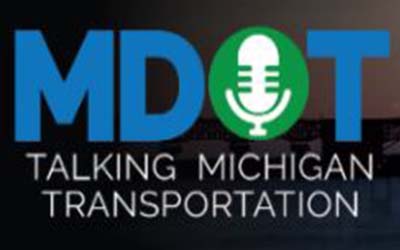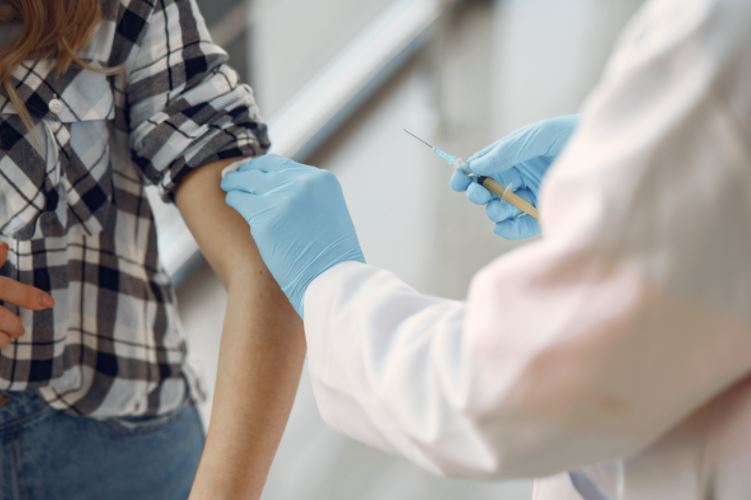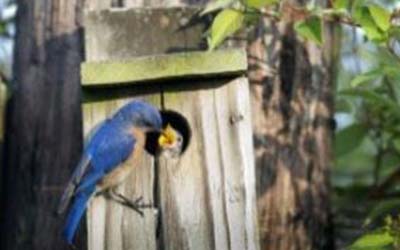DNR News: DNR celebrates 100 years of conservation success
 |
|||||||
– DNR News – |
|||||||
|
 |
|||||||
– DNR News – |
|||||||
|

|
|
|


FOR IMMEDIATE RELEASE March 29, 2021 Media Contact: Press@Michigan.gov
Governor Whitmer & Lt. Governor Gilchrist on 4 Million Vaccines Administered
LANSING, Mich. — Governor Gretchen Whitmer and Lt. Governor Garlin Gilchrist today issued the following statements after Michigan surpassed four million doses of the safe and effective COVID-19 vaccine:
“This weekend, Michigan surpassed 4 million doses administered of the safe, effective COVID-19 vaccines,” said Governor Whitmer. “Our rollout continues to pick up steam and we will not rest until we reach our goal of equitably vaccinating 70% of Michiganders ages 16 and up. Michigan continues to make significant strides – administering four million vaccines in less than four months – as we work to ensure every Michigander has access to the vaccine. In line with President Biden’s goals, all Michiganders 16 and up will be eligible to receive the vaccine starting April 5. We will emerge from this pandemic stronger than ever and celebrate Independence Day together with friends and family. We will become the state that beat this damn virus.”
To date, Michigan has administered 4,126,550 vaccine
“We continue to meet or exceed our goals as more and more Michiganders become eligible to get the safe and effective COVID-19 vaccine,” said. Lt. Governor Gilchrist. “With every vaccine administered, we get one step closer to eliminating this deadly virus once and for all. I’m asking every Michigander to make a plan to get the vaccine when it is your turn. We can all be part of the solution that saves lives and helps us get back to normal. Soon we will be able to see and hug our friends, families, and loved ones, but for now we must continue taking smart precautions like wearing a mask, social distancing, and washing our hands.”
Both Governor Whitmer and Lt. Governor Gilchrist will get the safe and effective COVID-19 vaccine when they become eligible under the next phase of vaccine administration guidelines.
|

| Plus, check out the story of Helen Mandeville Martin for #WomensHistoryMonth |
|

Detroit – SMART, in partnership with Via, the leader in TransitTech, announces a first-of-its-kind mobility solution for Wayne, Oakland, and Macomb counties that will transform the way residents are able to access public transit. This week SMART began to operate its on-demand public transit service, called SMART Flex which will complement and extend the reach of convenient service in its existing transit system.
“SMART is taking several giant steps forward with the introduction of the Flex service, it helps to better meet the varying transit needs across the region with quick, affordable service,” said Kahlil Rahal, Chairman, SMART Board of Directors and Wayne County Deputy County Executive. “The new SMART Flex service in Dearborn, Troy and the Hall Road corridor is a flexible, technology based, vital transit service that helps people to easily move around to get to the places they need to go.”
Cities across the globe like Berlin, Miami, and Seattle rely on digitally-enabled transit solutions to create flexible, equitable, and resilient public transportation networks. SMART Flex is the Authority’s first venture into microtransit, and will strengthen a comprehensive transit network across the region by encouraging first-and-last mile connections to existing bus routes including SMART’s successful FAST service. The service will also facilitate local trips to hospitals, universities, and commercial destinations.
Using the SMART Flex mobile app, anyone within the zones, including residents and workers in Dearborn, Troy, and the Hall Road corridor between Utica and New Baltimore will be able to hail a vehicle directly from their smartphone or by calling the call center at (734) 212-8429. Via’s advanced algorithms create quick and efficient trips by matching passengers and vehicles together in real time, and directing riders to a nearby “virtual bus stop” for pick up and drop off. The service will offer wheelchair-accessible vehicles and offer door-to-door service for those with limited mobility. SMART is hosting community events this week to increase awareness of the new service in each of the three areas.
“The launch of SMART Flex is a pivotal moment for transit in the Metro Detroit area,” said Daniel Ramot, Via CEO and co-founder. “A technology-enabled mobility solution will enhance and extend the strong transit network that SMART has already established, and offer a new way for residents to access critical opportunities across the region.”
SMART Flex will offer microtransit trips from 6 a.m. to 9 p.m., seven days a week. Rides start at $2, with a maximum price of $8, depending on distance. Payment can be made by credit card or with Dart or SMART Passes. The SMART Flex app is available in English and Arabic. When a rider combines both SMART fixed route service and SMART Flex to complete their trip, the first $2 of the ride are included as part of the fixed route total fare – providing more convenient service as part of a fixed route trip.
SMART Vax Transportation Eliminates Transit as a barrier for Vaccinations
Technology-enabled transit allows the service to be flexible, and allows SMART to make informed decisions throughout the duration of this initiative based on the changing needs of the community. As a result, SMART decided to launch free rides to-and-from vaccination sites in Metro Detroit starting on March 10th, without the need for a private vehicle. Trips to vaccine centers are door-to-door, and are available weekdays from 8 a.m. to 6 p.m. and on weekends from 10 a.m. to 4 p.m. This offering is in addition to the microtransit service. SMART was able to use Via’s flexible transit platform to adjust and expand the SMART Flex service area for vaccination trips as more vaccine sites open throughout the region. To date, SMART has directly provided more than 500 rides for residents to get their vaccination helping to eliminate transit as a barrier.
The microtransit service is an added transit service that will help SMART’s effort, as a transit provider, to ensure a ride is available for anyone in the region to get vaccinated.
“SMART is excited to launch SMART Flex in these three zones across our region to start the next innovation in public transportation” said Robert Cramer, Deputy General Manager of SMART. “This service builds on SMART’s most successful and convenient fixed routes to provide convenient service across these entire zones.”
Via works with more than 200 partners in over 20 countries to help connect more people to transit, including Green Bay Metro, Columbus Ohio Transit Authority (COTA), and Sydney’s Transport for New South Wales
About SMART:
Serving residents since 1967, SMART is southeast Michigan’s regional public transportation provider, offering convenient, reliable and safe transportation for Macomb, Oakland and Wayne Counties. SMART fixed route, small bus and the new Flex on-demand services connect people to employment and educational institutions, medical appointments and shopping centers. For routes and fare information, and COVID-19 Updates, visit smartbus.org.
About Via:
Founded in 2012, Via pioneered the TransitTech category by using new technologies to power public mobility systems, optimizing networks of dynamic shuttles, buses, wheelchair accessible vehicles, school buses, and autonomous vehicles around the globe. Building the world’s most efficient, equitable, and sustainable transportation network for all riders — including those with limited mobility, those without smartphones, and unbanked populations — Via works with its partners to lower the cost of public transit and provide accessible options that rival the convenience of a personal car at a much reduced environmental impact. At the intersection of transportation and technology, Via is a visionary market leader that combines software innovation with sophisticated service design and operational expertise to fundamentally improve the way the world moves, with 200 global partners on six continents, and counting.